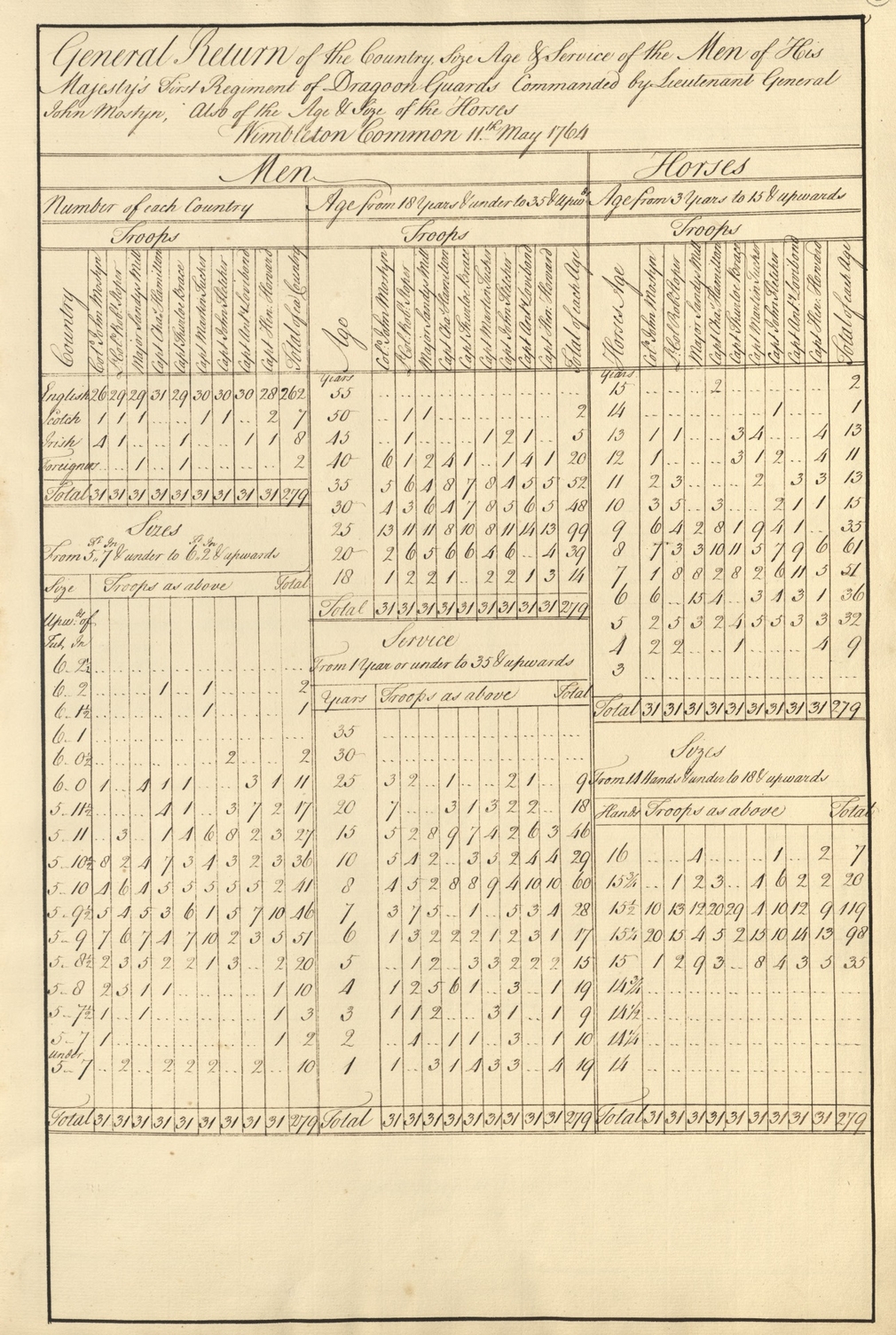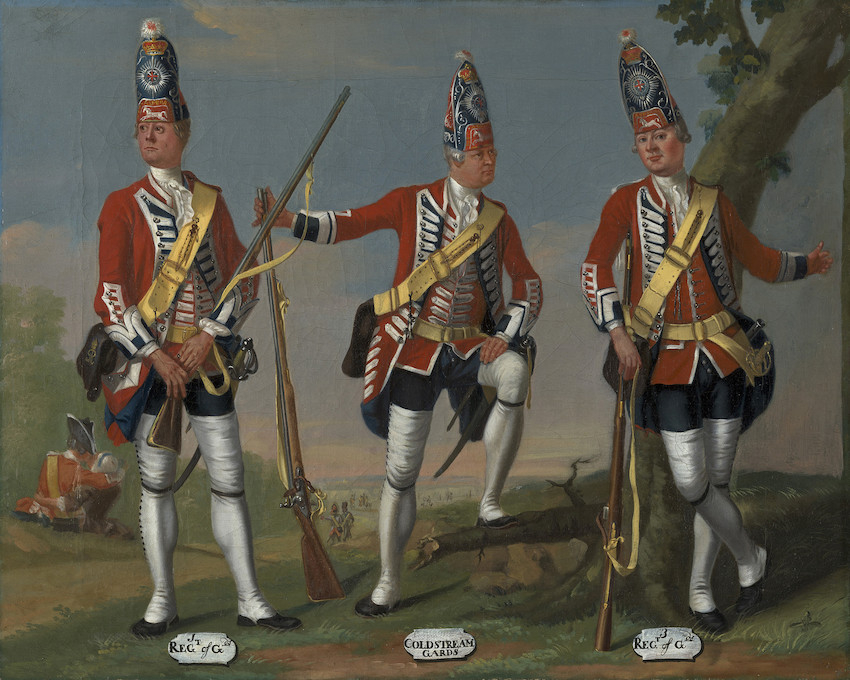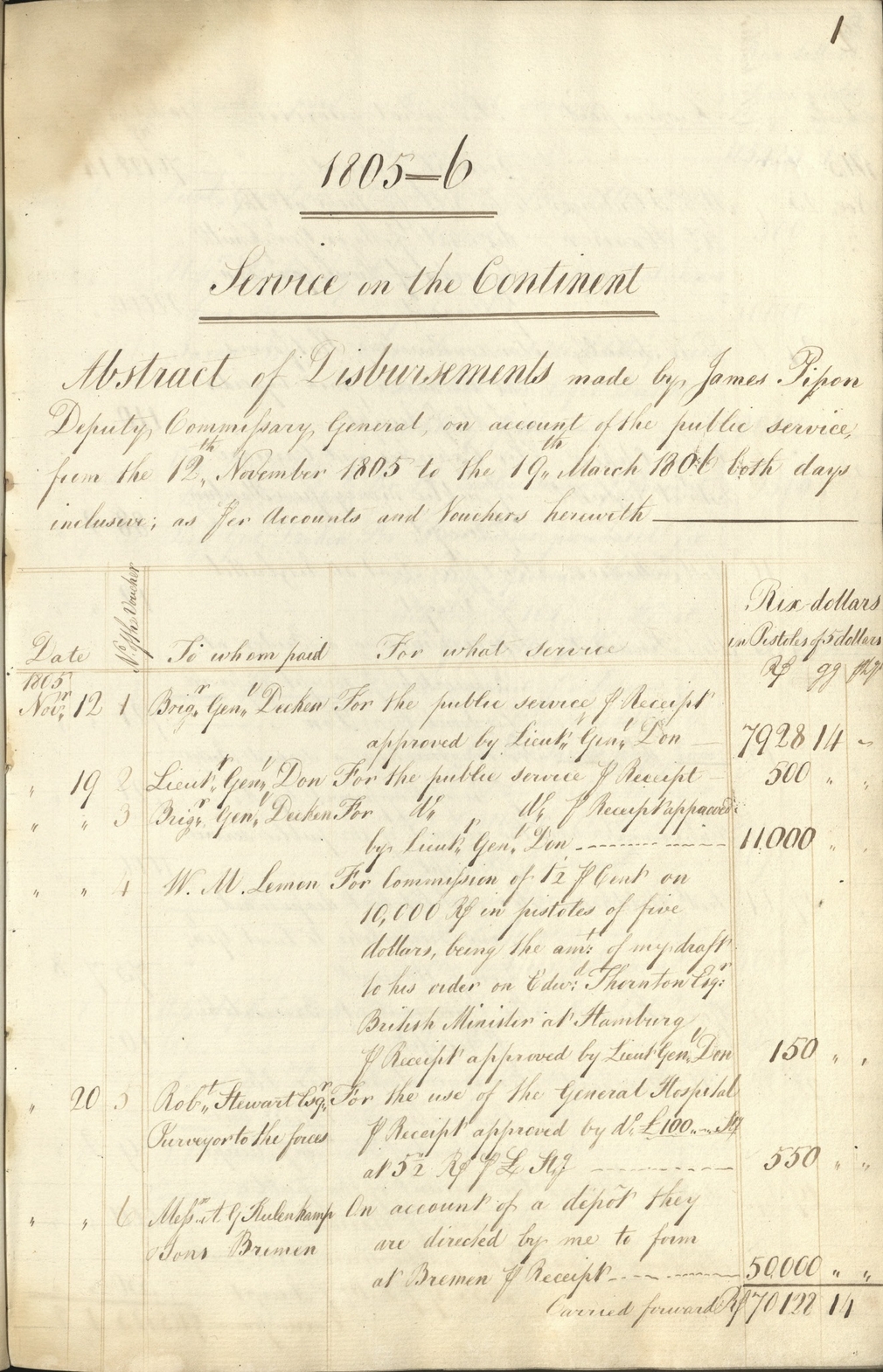
Review returns of forces inspected by Major-General George Eliott 1764, GEO/ADD/35/24 Royal Archives/© Her Majesty Queen Elizabeth II [2019]
Among the more mysterious collections within the Georgian Papers is a group of miscellaneous military papers of mixed and uncertain provenance. Many of these were previously in the Royal Library, but there are very few clues as to the circumstances of their acquisition. Several key members of Britain’s Hanoverian Royal Family were keenly interested in the military and may have acquired these papers: George II was the last British monarch to take active command in the field; his son William, Duke of Cumberland, was the leading British general during the War of the Austrian Succession and the Jacobite Rebellion in 1745; George III had an obsession with military and naval details; his son, George IV had also had military aspirations as a young man, which were frustrated by his father; and his brother William IV was an active officer in the Royal Navy; the Duke of York and Duke of Cambridge were also senior army officers.
The mixed bag of papers includes two volumes detailing Army Estimates and accounts, from 1714-4 and from 1742-57
There are several large lists, including the Army’s establishment in Ireland in 1725, officers of the Guards Regiments c.1729-1760 and c.1752-1758
There are several reports: on half-pay officers in 1726, the reduction of the French army following the peace of 1762, artillery experiments in 1777, and the commission of military enquiry in 1809.

Grenadiers, 1st and 3rd Regiments of Foot Guards and Coldstream Guards, 1751 c.1751-60, RCIN 405597 ©
Other items include a volume of diagrams of cavalry manoeuvres, overviews of the artillery taken by the Earl of Albemarle, probably for the siege of Havana in 1762 (GEO/ADD35/44 and GEO/ADD/35/45) and a proposal for reorganising the Household troops on a French model from about 1730.
One larger bloc of papers is a group of 26 returns from military reviews, however, given their dates, it is probable that they do not all share a common provenance. One dates from 1724, but the bulk is from the period 1761-67. These review returns provide statistical overviews of the officers and men in the regiments reviewed and a verbal summary. This includes: origins, ages and seniority of the officers; assessment of the unit’s effective field strength; the origins, ages, size and length of service of the men; assessment of the quality of the arms, accoutrements and clothing.

Abstract of disbursements of James Pipon, Deputy Commissary General, during his service on the continent 1805-1806, GEO/ADD/35/46. Royal Archives /© Her Majesty Queen Elizabeth II 2019
The only other somewhat distinct sub-collection comprises papers of James Pipon (1770-1837), who was from Jersey and served as a commissary for the British Army, responsible for provisions of food and forage for the troops and horses. The Royal Archives holds letterbooks from his first junior appointments at the depots in Guildford and then Tenterden 1797-1800, his subsequent appointment in charge of the magazine at Aboukir in support of the Egyptian campaign in 1801, as well as his first senior appointment as Deputy Commissary-General of the King’s German Legion in Bremen in 1805-7. These are accompanied by some financial accounts, from Guildford and Tenterden, and Bremen. Also with these papers is a volume in Spanish itemising debts owed to a joint venture of Pipon and a Pedro (Peter?) Dorey (perhaps a fellow Jerseyman) carried on in Santander and London. These papers may be valuable sources for the biography of a man who by the end of the Napoleonic Wars was one of the most senior commissaries in the British Army. They provide evidence of the British military logistics system, and likely complement those papers held by the Jersey Heritage Trust. Unfortunately, the Royal Archives has no provenance information which suggest how these papers came to be in the Royal Archives.
